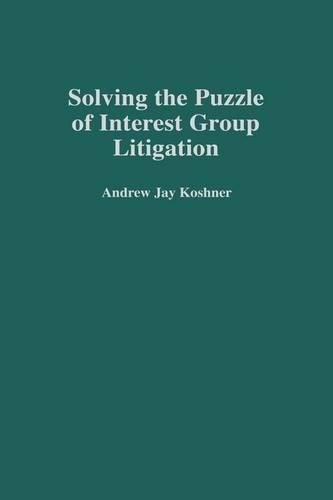
Solving the Puzzle of Interest Group Litigation
(Hardback)
Publishing Details
Solving the Puzzle of Interest Group Litigation
By (Author) Andrew Koshner
Bloomsbury Publishing PLC
Praeger Publishers Inc
12th February 1998
United States
Classifications
Tertiary Education
Non Fiction
Constitutional and administrative law: general
342.73085
Physical Properties
Hardback
144
Description
Koshner explores the increase in interest group participation before the U.S. Supreme Court. Since 1953, when less than 13 percent of the Court's full opinion cases were accompanied by friend of the court briefs, there has been a steady increase in interest group litigation. By the 1993 term, interest groups participated in 92 percent of the cases brought before the Supreme Court. While asking whether the rise in interest group activity in this supposedly indepedent arena should concern us, Koshner attempts to solve the fascinating political puzzle of this tremendous growth. He begins with the growth of interest group participation and asks, quite simply, why In answering this question, Koshner draws on a series of studies that focus primarily on individual groups and their litigation decisions. He then uses them to explore the macro-level trends that pervade the relationship between the Supreme Court and interest groups. In particular, Koshner studies the roles of four important groups: the Court, Congress, the executive branch, and the interest groups themselves. Within each, he finds a series of changes or shifts in policy that begins to answer the puzzle, and examines his conclusions within the context of First Amendment church-state cases. Students, scholars, and other researchers dealing with contemporary public law issues will find this work of particular value.
Author Bio
ANDREW JAY KOSHNER concentrates his research in the areas of the Supreme Court, Constitutional law, judicial process, and American politics.
